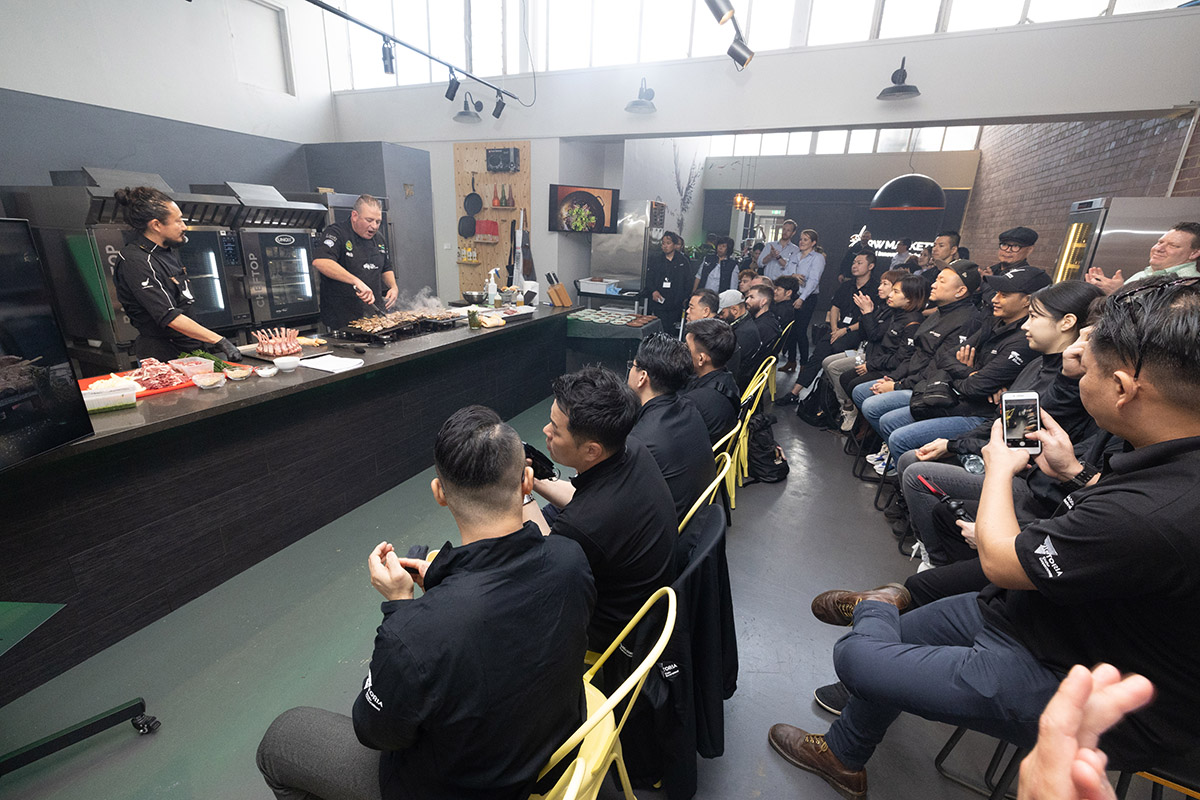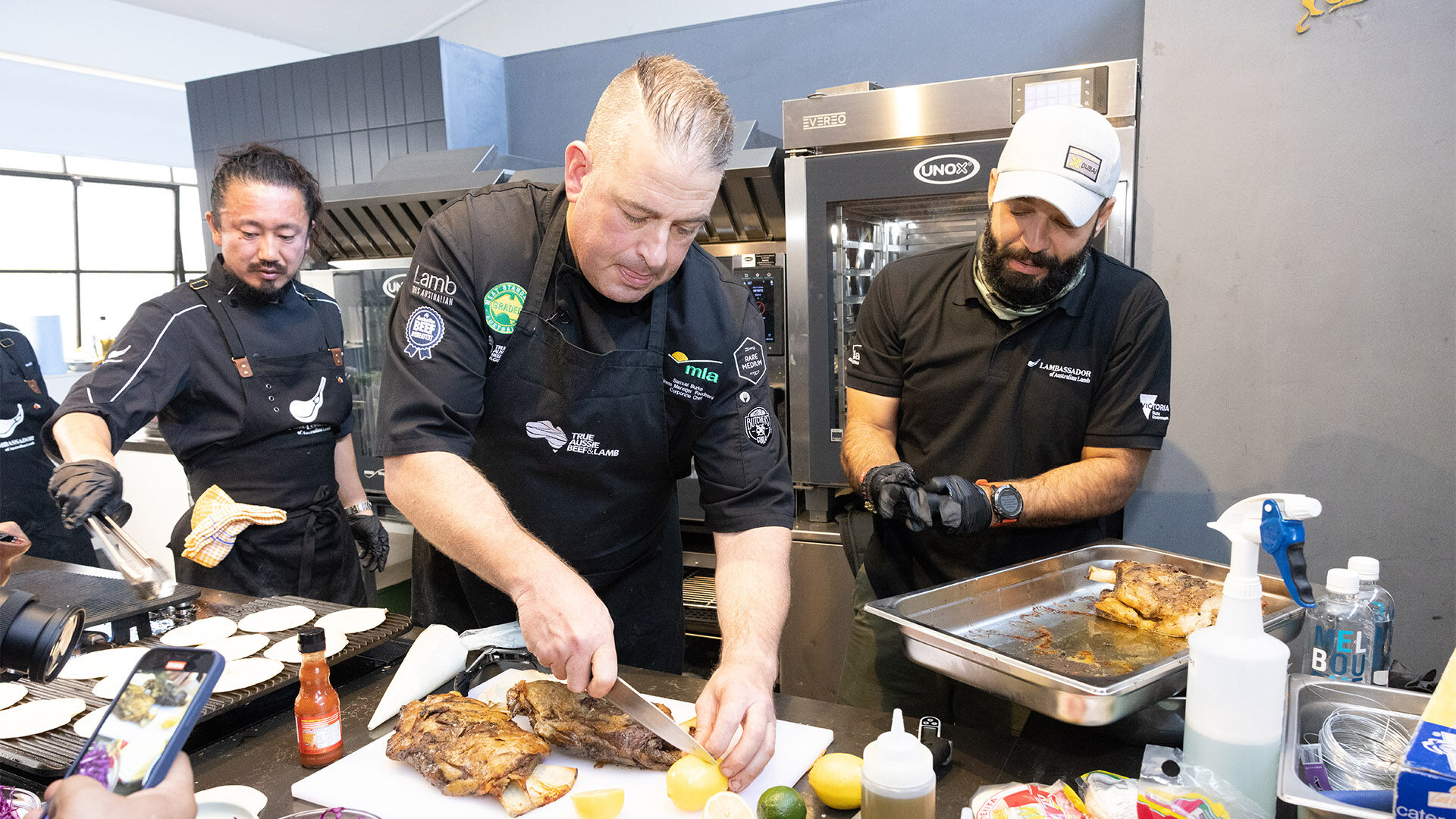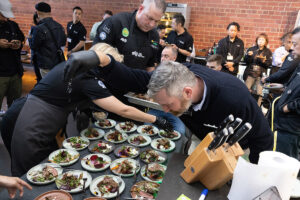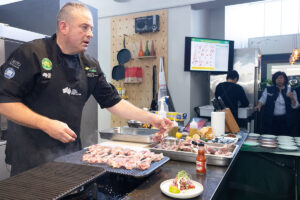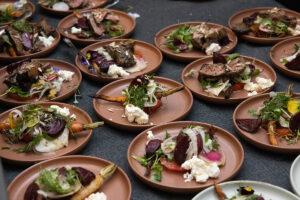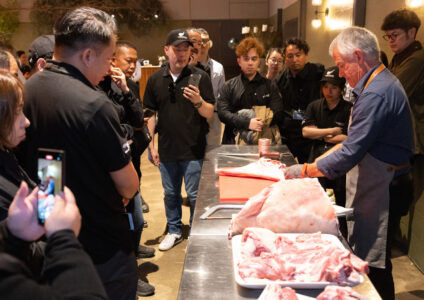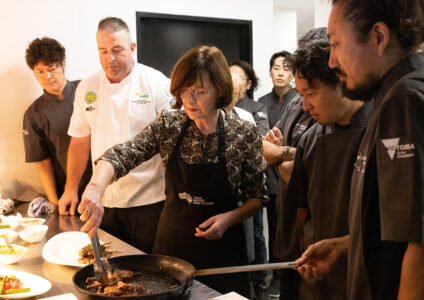For Chef Sam Burke, the red meat artisan’s passion for red meat runs deep, he is a full believer of maximising the versatility of Australian Lamb and is always willing to share his knowledge. The key is to bring out the best flavours in the Lamb with a full carcass utilisation process, reducing food wastage and emanating joy from cooking to consuming.
Eating is a necessity, but Cooking is an Art
Sam’s knowledge of red meat spans the entire supply chain, having close ties with Australian producers, food service professionals, restaurant chains, retailers, and meat traders to celebrate the attributes of red meat to the food service community. Through the innovative uses of red meat and education, they contributed to the continual development of these proteins in the markets and around the world.
In this Masterclass Cooking series for the Lambassadors, he showcased a variety of cuts and cooking methods specific to the Australian Lamb for meal inspiration and creating delicious and harmonious works that appeal to all five senses. A mixture of dry and moist heat methods is adopted in these demonstrations.
Generally, two basic methods are used for cooking Lamb: dry or moist heat. For dry heat cooking (grilling, roasting, broiling, sautéing), the meat is in direct contact or close to a hot surface or the heat source. High heat is used to brown the surface quickly, and the rest of the meat is cooked to desired doneness, bringing out the full tender juices of these cuts. For tougher cuts, one can also consider using a marinade to tenderise the meat before cooking. Dry heat method is used mostly in the featured recipes, which works extremely well for tender cuts.
With moist heat cooking (stewing, braising, poaching), the meat is usually cooked at a low temperature, being in contact with hot liquid. The hot liquid tenderises the meat and acts as a flavouring source. Moist heat methods are commonly used on cuts such as shoulder and shank.
The recipes accumulate the best essences from various continents, portraying how spices, and condiments unique to these places can accentuate the taste of the dishes.
From slow roasted lamb shoulder to braised lamb shank to grilled lamb loin, these dishes are meticulously paired with raw ingredients that complement the rich flavour profile of the Australian lamb.
To dispel the obscurity about the lesser known lamb cuts, we can see the versatility of the Australian Lamb being highlighted in the various recipes under the different cooking styles and techniques. In one of the recipes, Rack Of Lamb with Lamb Croquettes, the clever use of lamb neck added a subtle but ingenious touch to the lamb rack’s dense flavour. This is how it is done.
First is the lamb rack. This lamb cut is suitable for use in a variety of dishes presentation, with the quality meat being naturally raised on pasture. The Lamb is seared a golden brown in just a few minutes and subsequently cooked in a gastronome to an internal temperature of 53℃ to achieve the perfect medium rare.
Next comes the lamb neck. The aroma of the sauce combining a mirepoix of celery, carrots, and tomatoes with garlic, onions and herbs is enhanced with the slow-cooking of the lamb neck in a gastronome at 160℃ for 3 – 4 hours. It is followed by a trip into the oven at 180℃ for a final touch until the tender and juicy meat falls off the bone. Handcrafting the shredded meat into logs, they are deep fried to a crispy golden brown.
For the last dazzle, it is putting together the preparation of the different lamb cuts in an aesthetic array. The result? A magnificent display of Lamb rack, croquettes, and petit salad leaves sprinkled with just the right amount of jus, carrot puree, peas and micro herbs.
The great length of effort, time and passion that goes into every dish creation is clearly seen in the presentation of tantalising Lamb served onto the platters and into the stomachs and hearts of the consumers.
For the Lambassadors, it was a long-awaited time of gathering with like-minded peers and learning from some of the best in the industry. Just like iron sharpens iron, the interactions allow a deeper understanding and appreciation for red meat.
Meat and Livestock Australia (MLA) continues to generate momentum in spreading the positive qualities on behalf of the entire lamb industry to create awareness, loyalty and demand for the Australian Lamb.
